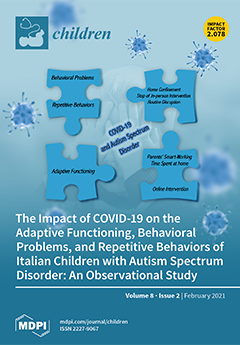Children, Volume 8, Issue 2 (February 2021) – 113 articles
Have the extreme circumstances of the COVID-19 outbreak impaired the adaptive functioning and behavior of children with Autism Spectrum Disorder?
Have the home confinement, interruption of in-person therapeutical interventions and routine disruption constituted real challenges for ASD children and their families?
Does web-delivered intervention represent an effective choice in emergency situations like COVID-19?
Our research on 85 Italian children with ASD investigates the answers to these questions. Specifically, through a comparison with a baseline evaluation performed during the months preceding COVID-19, we evaluated whether after compulsory home confinement, any improvement or worsening was reported by parents of ASD individuals using standardized instruments. View this paper
- Issues are regarded as officially published after their release is announced to the table of contents alert mailing list.
- You may sign up for e-mail alerts to receive table of contents of newly released issues.
- PDF is the official format for papers published in both, html and pdf forms. To view the papers in pdf format, click on the "PDF Full-text" link, and use the free Adobe Reader to open them.






